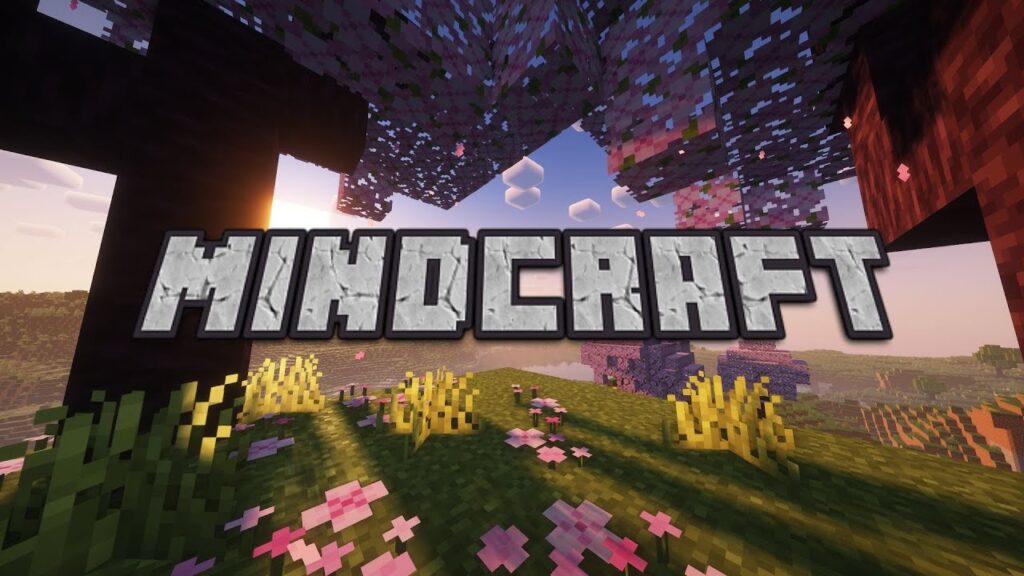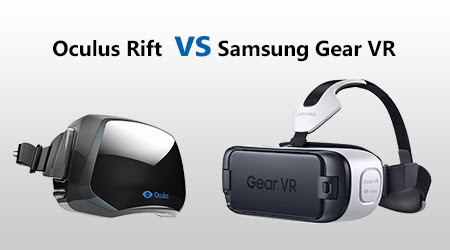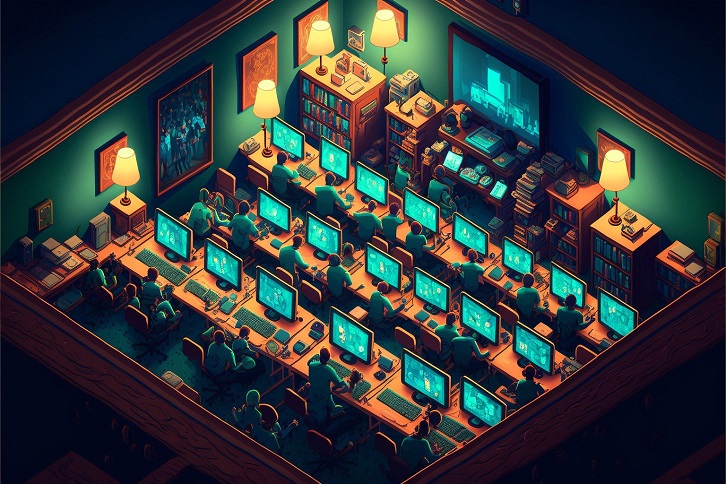Minecraft, the sandbox game that lets players create and explore infinite worlds, has been a global phenomenon since its launch in 2009. With over 200 million copies sold and 126 million monthly active users, it is one of the most popular and influential video games of all time. But what makes Minecraft so appealing and enduring is not just its gameplay, but also its constant innovation and adaptation to new technologies. One of the latest examples of this is the integration of graphic cards and VR technology, which promise to take the game to a new level of realism and immersion.

Graphic cards are hardware devices that process and display images on a computer screen. They are essential for running high-end games that require complex graphics and animations. VR technology, or virtual reality, is a form of interactive media that simulates a three-dimensional environment that users can explore and interact with.
VR technology usually requires a headset that covers the eyes and ears, and sometimes other accessories such as controllers or gloves, to create a realistic and immersive experience.
In recent years, both graphic cards and VR technology have advanced significantly, offering new possibilities and challenges for game developers and players. For Minecraft, these technologies have enabled the game to support features such as ray tracing, VR headsets, and cross-platform compatibility, which enhance the game’s graphics and gameplay.
Ray tracing is a technique that simulates how light behaves in the real world, creating realistic shadows, reflections, and lighting effects. Ray tracing can make Minecraft look more lifelike and detailed, especially when combined with high-resolution textures and shaders.
However, ray tracing also requires a lot of computing power, which means that only the most powerful graphic cards can support it. For example, Nvidia, one of the leading graphic card manufacturers, has developed a special edition of Minecraft that uses its RTX technology, which enables ray tracing on its latest graphic cards. This edition of Minecraft is only available for Windows 10 PCs, and requires a graphic card that costs at least $400.
VR headsets are devices that allow users to experience Minecraft in a virtual reality mode, where they can see the game world from a first-person perspective, and move and interact with it using their head and hands.
VR headsets can make Minecraft more immersive and engaging, as users can feel like they are actually inside the game world, and explore it in a more natural and intuitive way.
However, VR headsets also have some drawbacks, such as being expensive, bulky, and uncomfortable, and causing motion sickness or eye strain for some users. Moreover, VR headsets are not compatible with all versions of Minecraft, and require different software and hardware depending on the platform. For example, Oculus Rift, one of the most popular VR headsets, can only run Minecraft on Windows 10 PCs, and requires a separate app and a controller to play.
On the other hand, Samsung Gear VR, another popular VR headset, can run Minecraft on Android smartphones, and uses the phone’s touch screen or a Bluetooth controller to play.
Cross-platform compatibility is a feature that allows users to play Minecraft with other users who are using different devices and platforms, such as PCs, consoles, mobile phones, and tablets. Cross-platform compatibility can make Minecraft more accessible and social, as users can play with their friends and family regardless of what device they have, and join a larger and more diverse community of players.
However, cross-platform compatibility also has some limitations, such as not supporting all versions of Mindcraft, and not allowing users to transfer their progress and data across different platforms.
For example, Minecraft Java Edition, the original version of the game that runs on PCs, is not compatible with other versions of the game, and does not support graphic cards or VR technology. On the other hand, Minecraft Bedrock Edition, the newer version of the game that runs on multiple platforms, supports graphic cards and VR technology, but does not allow users to transfer their worlds and mods from the Java Edition.
The benefits and challenges of using graphic cards and VR technology for Mindcraft are evident from the data and opinions of various sources, such as sales figures, user reviews, and industry reports.
According to Nvidia, its RTX graphic cards have sold over 100 million units since their launch in 2018, and its RTX edition of Minecraft has been downloaded over 2 million times since its release in 2020.
According to Oculus, its Rift VR headset has sold over 3 million units since its launch in 2016, and its version of Minecraft has been one of the most popular and highest-rated games on its platform. According to Microsoft, the owner of Minecraft, its Bedrock Edition has reached over 200 million players across 14 platforms, and its cross-play feature has increased the game’s engagement and retention rates.
However, not all users and experts are satisfied or impressed with the graphic cards and VR technology for Minecraft. Some users complain that the graphic cards are too expensive, the VR headsets are too uncomfortable, and the cross-platform compatibility is too restrictive. Some experts argue that the graphic cards and VR technology do not add much value or innovation to the game, and that they may even detract from the game’s original charm and appeal.
For example, Jens Bergensten, the lead developer of Mindcraft, said: “We wanted to make the game as realistic as possible, while still keeping the Minecraft feel to it.” However, some critics and fans disagree, and claim that the game’s pixelated and blocky graphics are part of its identity and aesthetic, and that making it too realistic would ruin its essence and spirit.
Graphic Cards and VR Technology: How They Enhance the Gameplay and Graphics of Minecraft
To understand how graphic cards and VR technology enhance the gameplay and graphics of Minecraft, it is useful to look at some specific examples and screenshots that demonstrate their effects and impacts. The following sections will compare and contrast the different graphic cards and VR headsets available for Minecraft, and recommend the best ones for different types of players and budgets. They will also evaluate the impact of graphic cards and VR technology on the game’s values and community, such as creativity, collaboration, and diversity.
Graphic Cards: Ray Tracing vs Non-Ray Tracing
One of the most noticeable and impressive features of graphic cards for Minecraft is ray tracing, which creates realistic lighting effects that make the game world more vivid and dynamic. The following screenshots show the difference between ray tracing and non-ray tracing graphics in Minecraft:

As can be seen, ray tracing graphics are much more detailed and realistic than non-ray tracing graphics, especially in terms of shadows, reflections, and colors. Ray tracing graphics make the game world more immersive and atmospheric, as users can see the sun, the moon, the water, and the fire in a more natural and lifelike way.
Ray tracing graphics also make the game world more interactive and responsive, as users can see how the light changes depending on the time of day, the weather, and the angle of view.
However, ray tracing graphics also have some drawbacks and limitations, such as requiring a lot of computing power, being incompatible with some versions of Minecraft, and being expensive to buy. Ray tracing graphics can only run on the most powerful graphic cards, such as Nvidia’s RTX series, which cost at least $400.
Ray tracing graphics can also only run on the Windows 10 PC version of Minecraft, which means that users who have other devices or platforms cannot enjoy them. Ray tracing graphics can also affect the game’s performance and stability, as they can cause lag, stuttering, or crashing if the graphic card is not powerful enough or if the settings are not optimized.
Therefore, ray tracing graphics are best suited for users who have a high-end PC, a large budget, and a preference for realism and immersion. Ray tracing graphics are not recommended for users who have a low-end PC, a small budget, or a preference for simplicity and nostalgia.
VR Headsets: Oculus Rift vs Samsung Gear VR

Another feature that enhances the gameplay and graphics of Minecraft is VR technology, which allows users to experience the game in a virtual reality mode, where they can see the game world from a first-person perspective, and move and interact with it using their head and hands.
Oculus Rift and Samsung Gear VR have similar graphics and gameplay, as they both use the same version of Minecraft, the Bedrock Edition. However, Oculus Rift has some advantages over Samsung Gear VR, such as having a higher resolution, a wider field of view, and a more comfortable and adjustable design.
Oculus Rift also has some disadvantages over Samsung Gear VR, such as being more expensive, more bulky, and more dependent on external hardware and software. Oculus Rift costs around $300, while Samsung Gear VR costs around $100.
Oculus Rift also requires a PC, a controller, and an app to run Minecraft, while Samsung Gear VR only requires a smartphone and a touch screen or a Bluetooth controller to run Minecraft.
Therefore, Oculus Rift is best suited for users who have a PC, a large budget, and a preference for realism and immersion. Oculus Rift is not recommended for users who have a smartphone, a small budget, or a preference for convenience and portability.
Graphic Cards and VR Technology: How They Impact the Game’s Values and Community
Beyond the gameplay and graphics, graphic cards and VR technology also have an impact on the game’s values and community, such as creativity, collaboration, and diversity. Minecraft is a game that encourages users to express their imagination and creativity, to work together and learn from each other, and to celebrate and respect their differences and uniqueness. Graphic cards and VR technology can enhance these values and community aspects, but they can also pose some challenges and risks.

Graphic cards and VR technology can enhance the game’s creativity by allowing users to create and experience more realistic and immersive worlds, and to explore new possibilities and perspectives.
For example, users can use ray tracing to create stunning lighting effects, or use VR to experience the game in a more immersive and interactive way. Graphic cards and VR technology can also inspire users to learn new skills and knowledge, such as coding, design, or physics, and to apply them to their creations.
For example, users can use graphic cards to learn how to optimize their performance and settings, or use VR to learn how to design and build in a three-dimensional space.
Graphic cards and VR technology can also enhance the game’s collaboration by allowing users to play and communicate with more users across different platforms and devices, and to share and showcase their creations and achievements.
For example, users can use cross-platform compatibility to play with their friends and family regardless of what device they have, or use VR to interact with other users in a more natural and intuitive way. Graphic cards and VR technology can also foster a sense of community and belonging among users, as they can join and support various groups and networks, such as servers, forums, or social media, and participate in various events and activities, such as competitions, festivals, or fundraisers.
Graphic cards and VR technology can also enhance the game’s diversity by allowing users to access and enjoy the game in different ways and preferences, and to express and celebrate their identities and cultures.
For example, users can use graphic cards to customize their graphics and settings according to their tastes and needs, or use VR to experience the game in a more personal and immersive way. Graphic cards and VR technology can also promote a culture of inclusion and respect among users, as they can expose and educate users about different perspectives and experiences, and encourage them to appreciate and embrace their differences and similarities.
However, graphic cards and VR technology also have some challenges and risks for the game’s values and community, such as creating barriers and inequalities, causing conflicts and controversies, and threatening the game’s integrity and authenticity.
For example, graphic cards and VR technology can create barriers and inequalities among users, as they can make the game more inaccessible and expensive for some users, and create a gap between the haves and the have-nots. Graphic cards and VR technology can also cause conflicts and controversies among users, as they can generate disagreements and disputes over the game’s rules and standards, and create divisions and factions among the users.
Graphic cards and VR technology can also threaten the game’s integrity and authenticity, as they can alter or compromise the game’s original vision and design, and create a disconnect or alienation between the users and the game.
Conclusion
Graphic cards and VR technology are two of the latest and most exciting technologies that have been integrated into Minecraft, one of the most popular and influential video games of all time. Graphic cards and VR technology offer new possibilities and challenges for the game’s graphics and gameplay, as well as for the game’s values and community. Graphic cards and VR technology can make the game more realistic and immersive, more accessible and social, and more creative and diverse, but they can also make the game more expensive and complex, more divisive and controversial, and more altered and disconnected.
The main argument or point of view of this article is that graphic cards and VR technology are not inherently good or bad for Minecraft, but rather depend on how they are used and perceived by the users and the developers. Graphic cards and VR technology can enhance or detract from the game’s appeal and endurance, depending on the users’ preferences and expectations, and the developers’ goals and decisions. Therefore, the future of graphic cards and VR technology for Minecraft is not predetermined or fixed, but rather dynamic and uncertain, and subject to change and evolution.
Some implications and recommendations for the future of graphic cards and VR technology for Minecraft are as follows:
- Users should be aware and informed of the benefits and challenges of using graphic cards and VR technology for Minecraft, and make informed and responsible choices based on their own needs and interests.
- Users should also be respectful and supportive of other users who have different preferences and opinions about graphic cards and VR technology for Minecraft, and avoid creating or escalating conflicts or controversies.
- Developers should be attentive and responsive to the feedback and suggestions of the users and the experts about graphic cards and VR technology for Minecraft, and make appropriate and balanced changes and improvements based on the game’s vision and values.
- Developers should also be innovative and adaptive to the new technologies and trends that emerge in the gaming industry, and explore new ways and opportunities to integrate them into Minecraft, while preserving and enhancing the game’s identity and essence.
If you are interested in trying out graphic cards and VR technology for Minecraft, or want to learn more about them, you can visit the official websites of Nvidia, Oculus, Samsung, and Microsoft, where you can find more information and resources, such as tutorials, reviews, and downloads. You can also check out some of the videos and articles that we have linked below, where you can see some examples and demonstrations of graphic cards and VR technology for Minecraft. Enjoy and have fun!